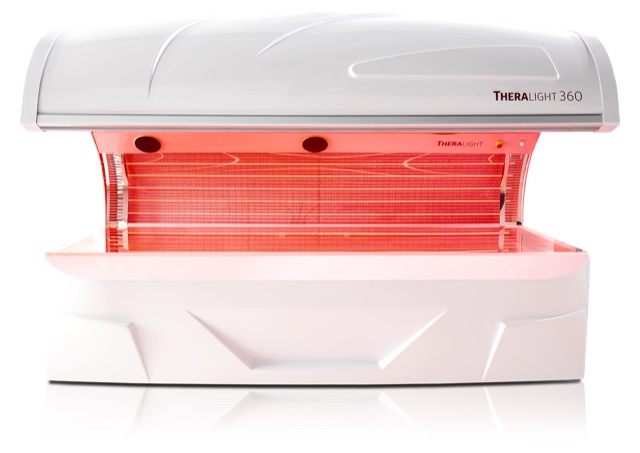You may have seen ads for infrared saunas or blankets popping up everywhere and wonder how that could help you. Of course, a sauna sounds very nice but what’s up with the infrared part? What does that do? And why would you want an infrared blanket?
What does infrared even mean?
First of all, infrared refers to light that is below the spectrum of visible light. You cannot see this type of light. Light is measured in wavelengths, and to further define infrared, there are near infrared (NIR) and far infrared (FIR) wavelengths. FIR is what is typically found in many of the devices sold to the general public like infrared blankets and saunas. Although, saunas, combine heat with light so the effects can be much different than light alone. FIR offers some mild effects but it doesn’t penetrate the body as much as NIR.
What is Visible Red Light Therapy?
There is a good amount of research on the benefits of red light therapy, but much of the clinical research published is on NIR and visible red light therapy. Visible red light, just as the name states, is visible to the naked eye, unlike infrared. When studies on light therapy are published the wavelength of the light is always defined, and that is a very important factor in choosing what type of device to use. Even with NIR, the exact wavelengths of the light need to be taken into consideration.
Bottom line, studies focus on red/NIR light, not FIR light because the data shows these to be more effective.
What are the effects of Red Light on the body?
So now that we have the light waves defined, what benefits can these various types of red light have on the body? We know that the following metabolic effects have been demonstrated with red/NIR light:
- anti-inflammatory
- anti-apoptotic
- antioxidant
- neurogenesis
- synaptogenesis
- upregulate BDNF synthesis
- stimulate healing
- protect tissue from dying
- increase mitochondrial function
- improve blood flow and tissue oxygenation
- reduce swelling
- modulate microglial activation state
- increase regional cerebral blood flow, improve memory, mood, and cognitive function
- improvement in executive function, working memory, and sleep (chronic effects of TBI)
- the release of anti-inflammatory cytokines, cytochrome c oxidase activity and ATP production in peri-infarct regions
- photobiomodulation could effectively switch an M1 microglial phenotype to an anti-inflammatory M2 phenotype
- stimulation of complex IV of the mitochondrial respiratory chain (cytochrome c oxidase) and increase ATP synthesis
- release of Ca2+ in ion channels leading to activation of transcription factors and gene expression
- robust suppression of reactive gliosis and the production of pro-inflammatory cytokines
- modulation gut microbiome
What does the research say?
In the last couple of years, research in this area has been expanding. Many of the studies are in tissue and animal models, but we are starting to see more human data emerging. Here are the main areas that have more significant study results with red/NIR light.
- Neurodegeneration
- Fat metabolism
- Microbiome
- Inflammation
- Mood
- Sleep
- Injury recovery
- Surgical recovery
- Wound healing
- Fertility
- Covid-19 related tissue recovery

